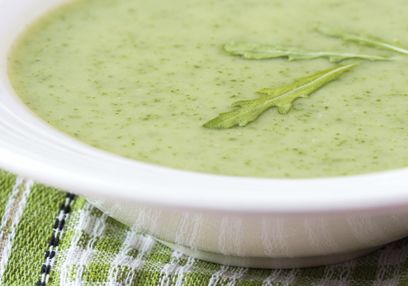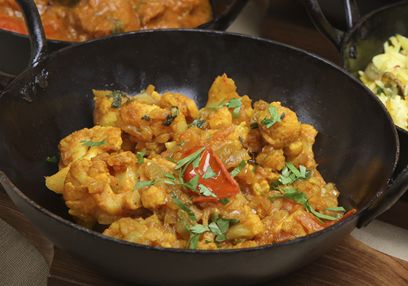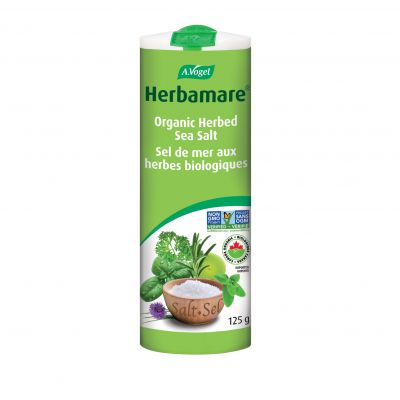A.Vogel search
When the internal search is activated, personal data such as your IP address is transmitted to our search engine Cludo. Data is thus transferred to a third country. Please click here if you want to display the internal search. You can find more information on data protection here: Privacy policy.
How to grow potatoes
Want to grow your own potatoes? Including choosing a plot, planting, nurturing and harvesting, find out how to grow and look after potato plants.
Potatoes are very popular plants to grow. Not only are they fairly easy to grow, but a supply of fresh and tasty potatoes is a tempting incentive. There are many varieties of potatoes, and so finding your favourite, or finding the one best suited to your growing conditions may take a little experimentation. The main potato season is September to November, although it is possible to get potatoes all year round as different varieties grow at different times.
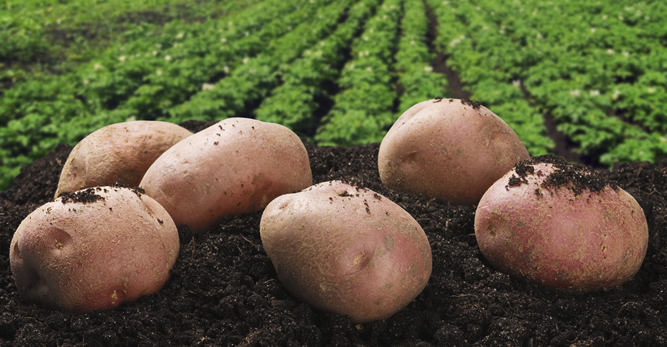
Choosing a Plot
Generally potatoes are tolerant to a range of different soils, but given the option, they grow best in loam soil, that is soil that is a mix of sand, silt and a small amount of clay. The plot should be in full sunlight and the soil should be well drained and well dug over the early winter.
It is best to rotate the potato plot each year, planting in the same plot only once every seven years if possible, although for practical purposes three or four years usually suffices. They should be planted about 30cm (12 inches) apart.
If you are not looking to grow potatoes in bulk, they can grow well in big containers. Often growing potatoes in pots produces good flavoured tubers.
Planting potatoes
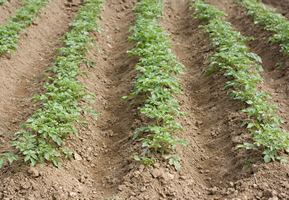 Many people find that ‘chitting’ potatoes before planting helps to produce a good crop of potatoes. Chitting is when you allow the potato to sprout before you plant it.
Many people find that ‘chitting’ potatoes before planting helps to produce a good crop of potatoes. Chitting is when you allow the potato to sprout before you plant it.
If planting in the ground, dig a trench about 10cm deep and plant the seed potatoes with the sprouts facing upwards. Cover with soil, and as the shoots appear above the ground cover them with soil too. If planting in a container, fill the container with about 15cm of soil before planting the seed potatoes, and again cover the shoots with soil until the container is full.
Potatoes should be planted about 30-40cm (12-18 inches) apart.
Nurturing your potatoes
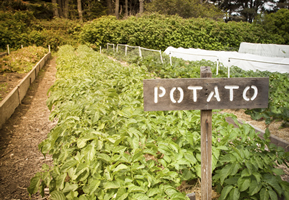 The early crops require plenty of water, particularly during a dry season. This is most important when tubers are starting to form. Keep the soil moist but not saturated.
The early crops require plenty of water, particularly during a dry season. This is most important when tubers are starting to form. Keep the soil moist but not saturated.
It is important not to expose new potatoes to light, as they will turn green and toxic.
Potatoes are susceptible to pests and diseases, particularly if planted in the same plot several years in a row. Slugs and snails may feast on the leaves, and keeping these under control can be difficult. Some people find that barriers of sawdust, eggshells and any other sharp or scratchy material can prevent the slugs harming your plants.
Potato blight is one of the most well known diseases to affect a crop of potatoes. It is most common during particularly wet weather. If blight strikes, there is little that can be done to prevent it spreading, although removing affected leaves and keeping the tubers well-covered with soil may provide some protection. Rotating the potato plot regularly is the most effective way of preventing potato blight.
Harvesting potatoes
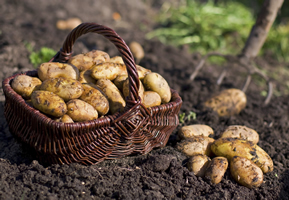 Early potatoes are ready for harvesting about 10 weeks after planting, or 20 weeks for maincrop varieties. They are generally ready to harvest when potatoes are the size of a hen’s egg. For early potatoes, this is when the plants begin to flower, for the later crop, this is a couple of weeks after the leaves have withered.
Early potatoes are ready for harvesting about 10 weeks after planting, or 20 weeks for maincrop varieties. They are generally ready to harvest when potatoes are the size of a hen’s egg. For early potatoes, this is when the plants begin to flower, for the later crop, this is a couple of weeks after the leaves have withered.
Allow the potatoes to dry in a well-ventilated position for a few hours after harvesting, and then store in paper or hessian sacks as storing in polystyrene can cause the potatoes to rot.
Alfred Vogel's guide to leading a healthy and happy life
Watch the videoNature is just about the best thing we’ve got!



